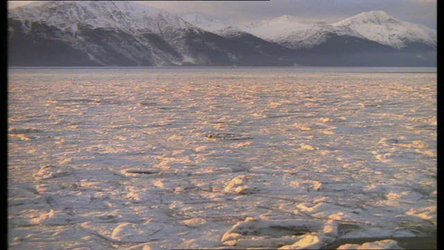

ERS-2 satellite and applications
Viewing results from a decade of ERS-2:
The spacecraft: ERS-2 was launched from French Guiana on an Ariane 4 during 21 April 1995. A successor to ERS-1, it carried one new instrument, the Global Ozone Monitoring Experiment (GOME).
Flood: ERS-2 has often been used in the context of the International Charter on Space and Major Disasters. This ERS-2 SAR image shows the confluence of Elbe and Vltava rivers in the Czech republic, north of Prague. It is a multitemporal composite view combining an ERS-2 image acquired before flooding (07 August 1998) and an ERS-2 image acquired during flooding (16 August 2002).
Scatterometer: ERS-2 carries a C-band scatterometer, capable of measuring ocean surface wind fields even in the fiercest of weathers. On 23 April 2004, around midnight to the west of Ireland, a complex low was developing. The red arrows show near-real time ERS-2 scatterometer wind speeds up to 15 m/s and a cyclonic wind direction. There is a significant improvement on the three-hour forecast (blue arrows) which shows only one cyclonic centre and no shear line.
Rainforest deforestation: Deforestation areas in Rondonia, Brazil, appear in light-coloured linear features of relatively high temperatures, in this thermal image from ERS-2's Along Track Scanning Radiometer (ATSR). Courtesy Leicester University.
Ground stations involved in ERS-2 data acquisition: Since the failure of the satellite's Low Bit Rate onboard recorder in 2003, a growing global network of ground stations has been voluntarily receiving and distributing its data in near-real time.
Ozone Monitoring: The GOME instrument on ERS-2 provided the first European trace gas measurements from space, enabling observations of high latitude 'ozone holes' at both latitudes. Because the data are available on a near-real time basis, they can be used to monitor events when low levels of ozone lead to an increase in the risk from the Sun's ultraviolet radiation.
Sea Surface Temperature: ERS-2 Along Track Scanning Radiometer (ATSR) image of the Gulf Stream off the US East Coast. Warmer waters are red, with colder northern waters shown in blue and green.
Ocean Wave Height: ERS-2's SAR sensor in Wave Mode can be used to derive average ocean wave height. In addition raw 'imagettes' are now being used by researchers to detect individual high 'monster' waves.
Land Cover Changes world map: Seasonal variation of vegetation response to ERS-2's scatterometer instrument, supporting climate change studies.
El Nino: The combination of ERS-2's ATSR and Radar Altimeter mapped temperature and height abnormalities arising from the 1997 El Nino event in the Pacific.





